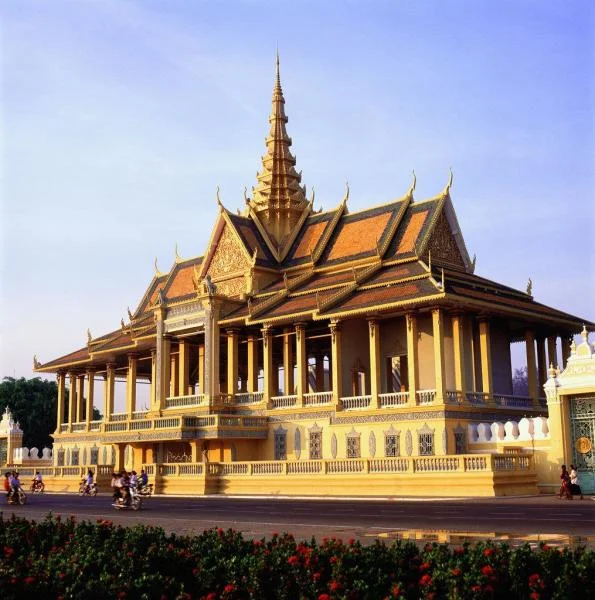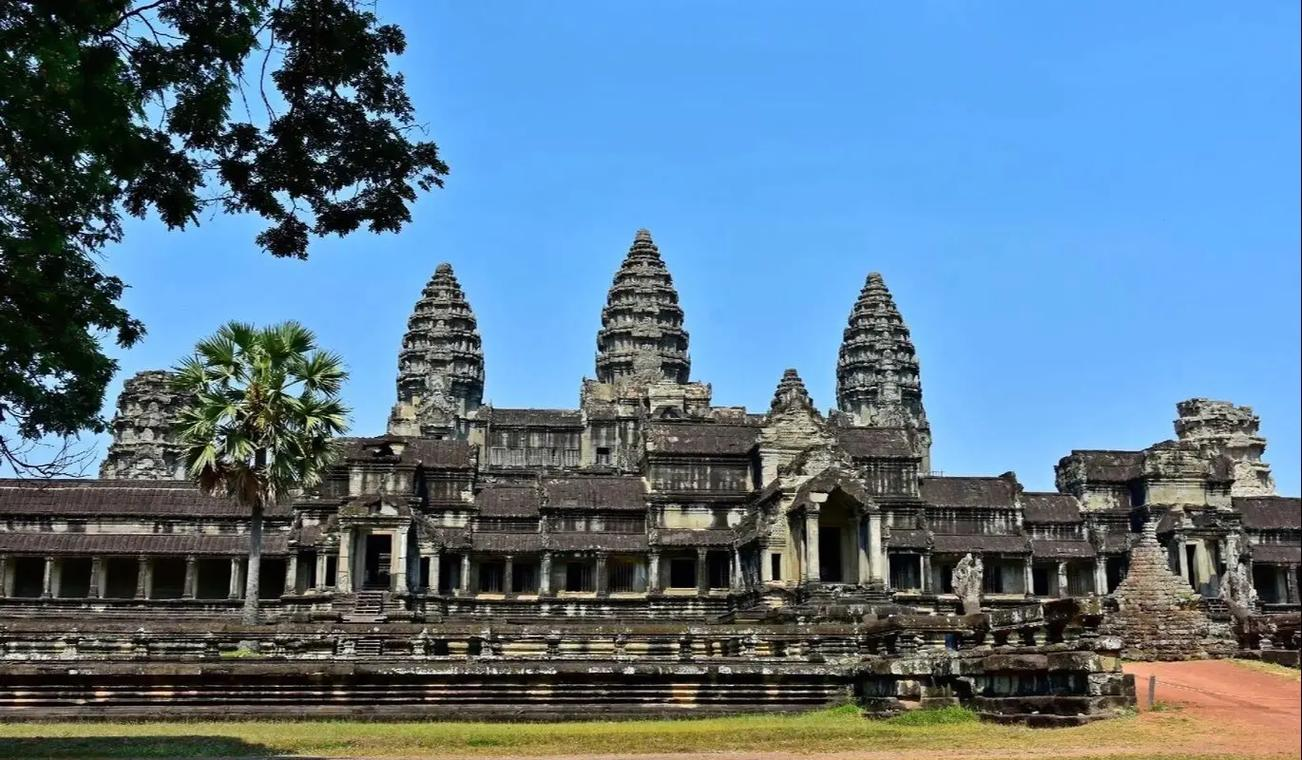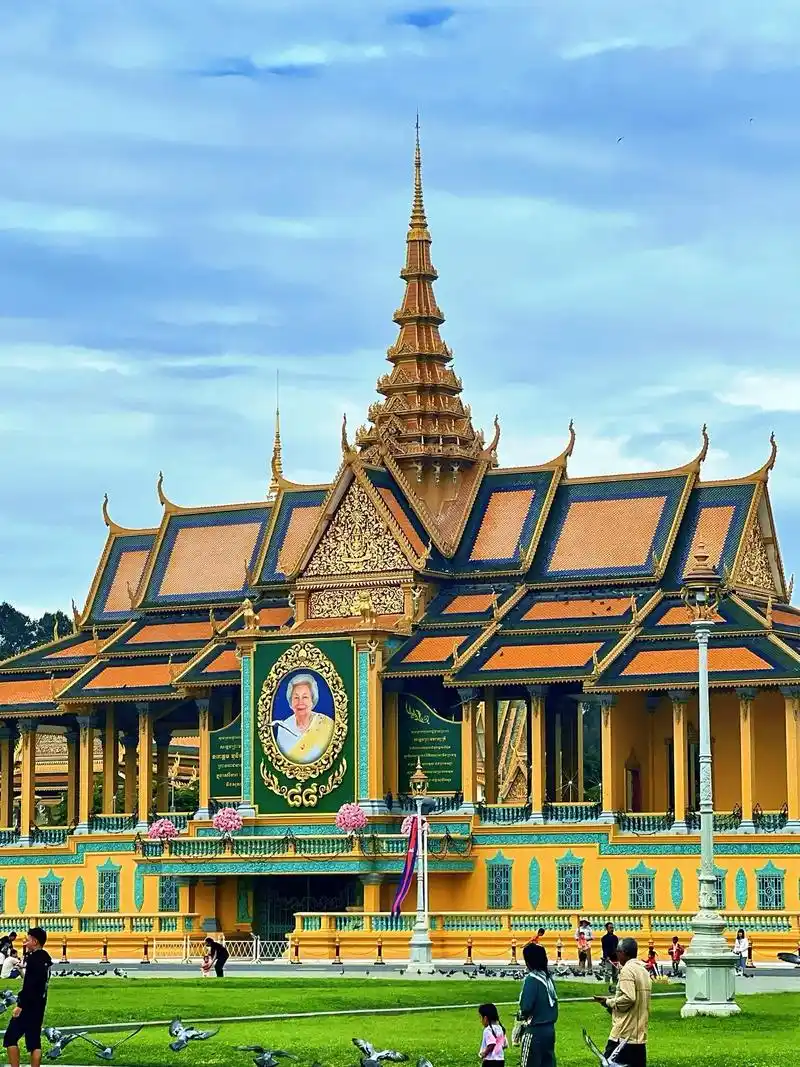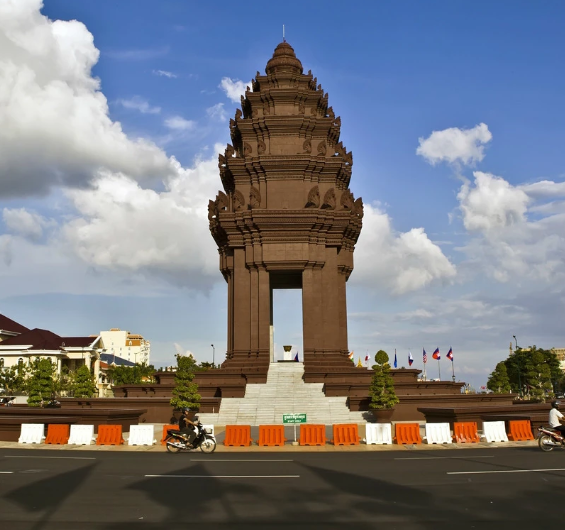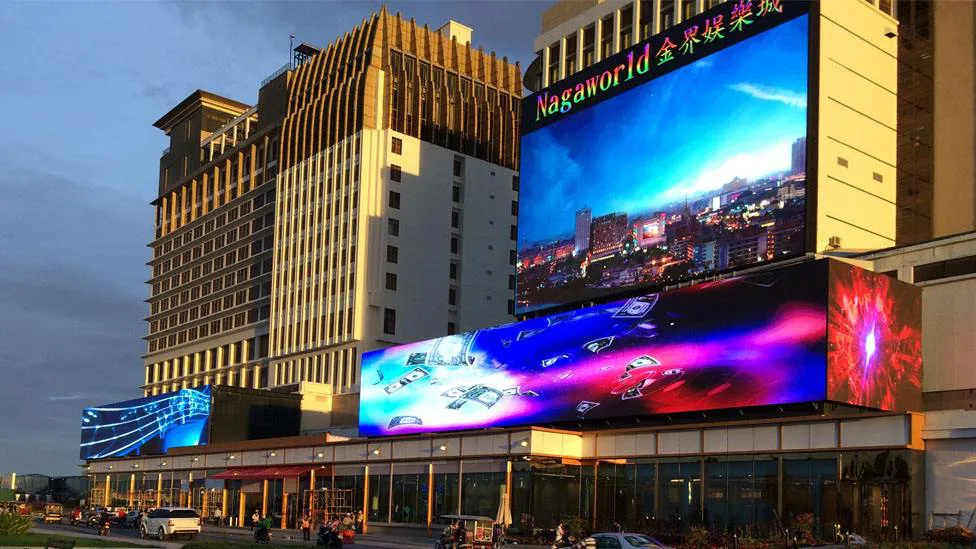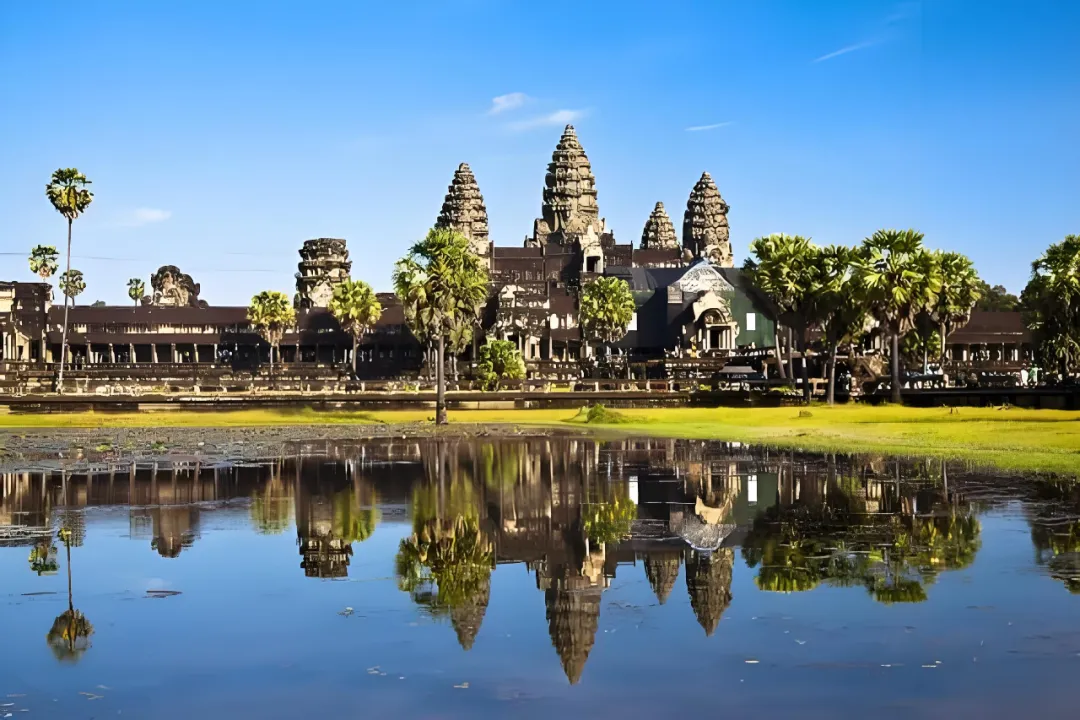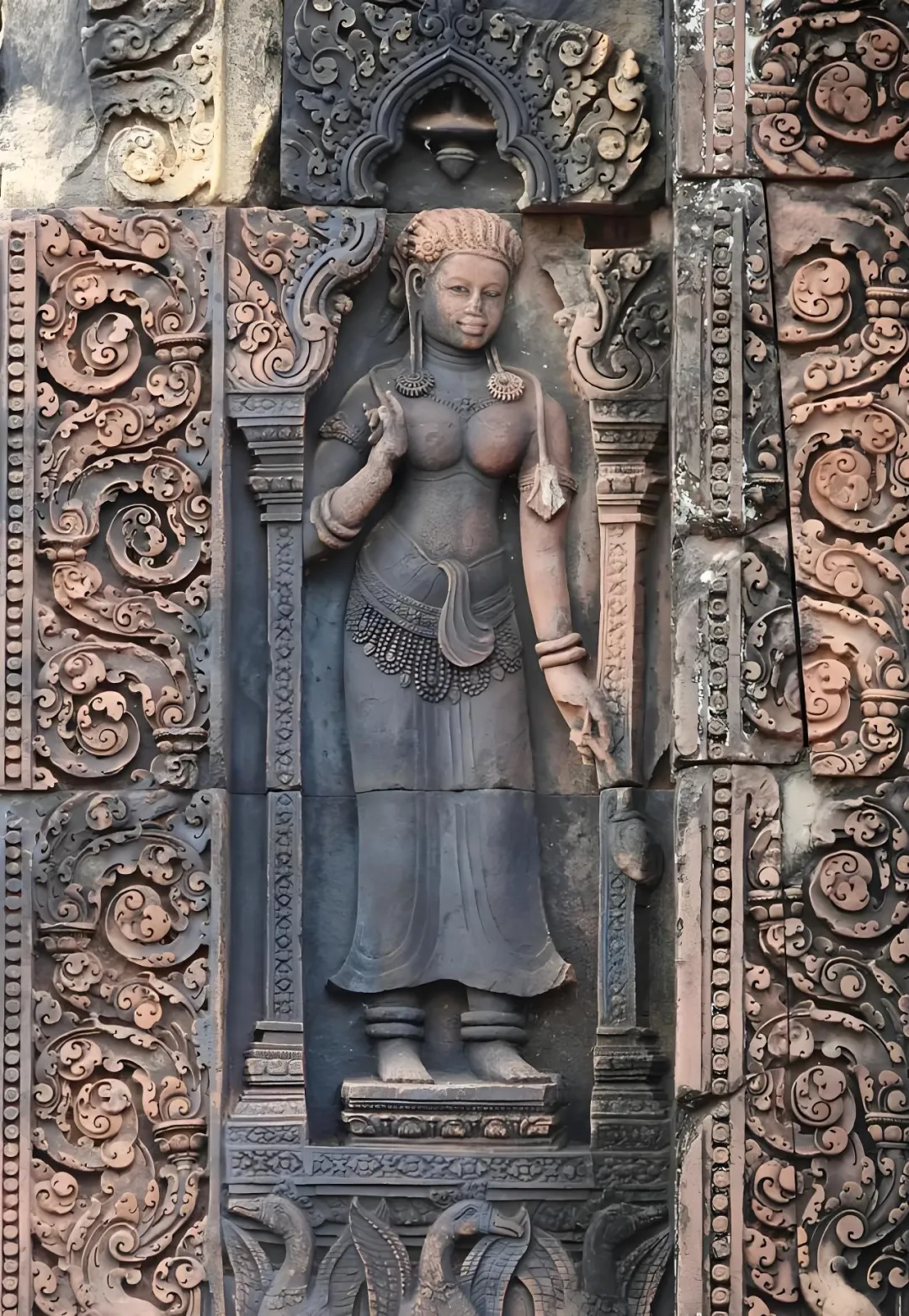Cambodia 01丨Phone
【Cambodia】
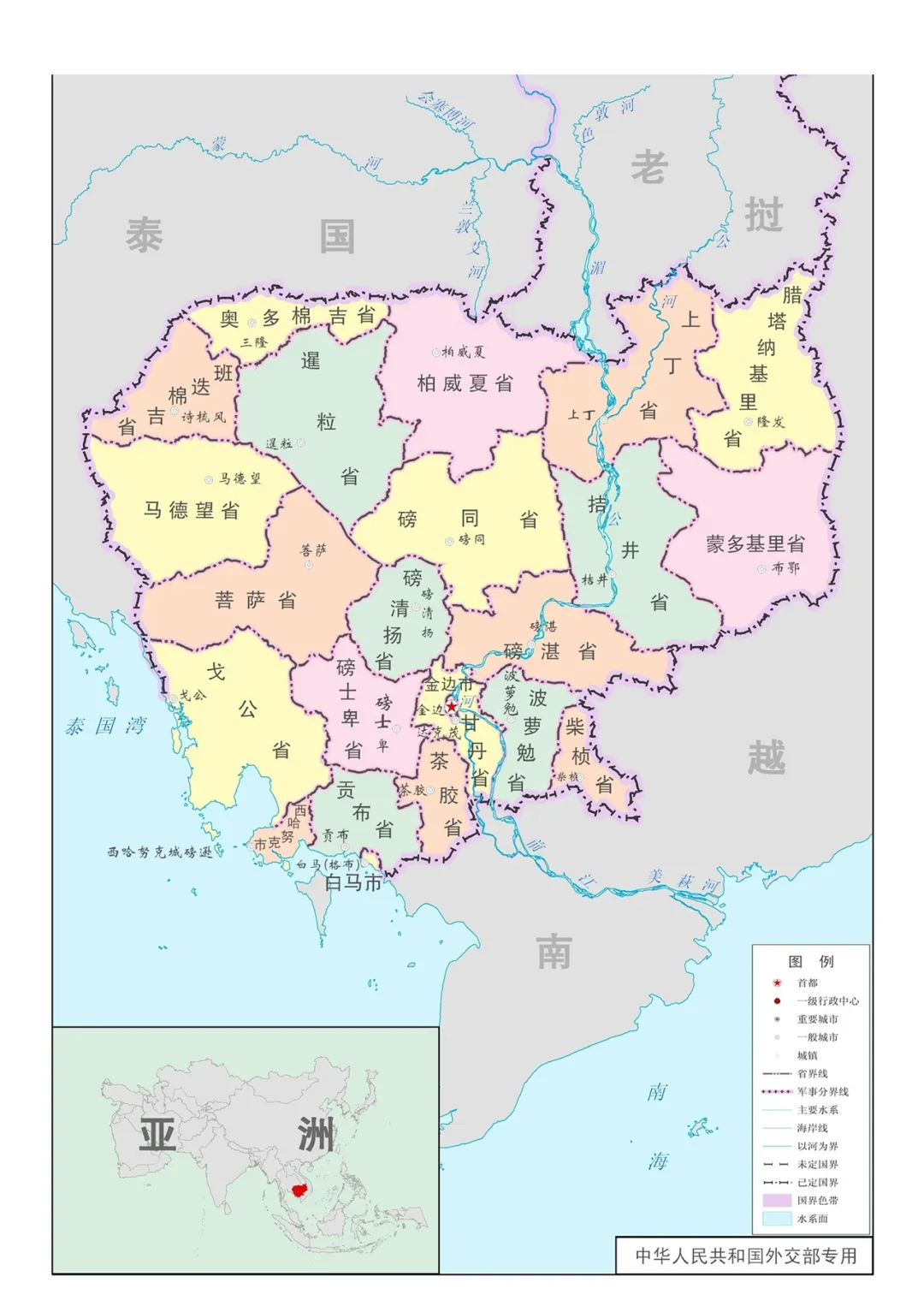
The picture shows the administrative map of Cambodia
Let’s briefly introduce Cambodia. Cambodia, known as the "Khmer", has a land area of 181,000 square kilometers, equivalent to 28 Shanghais; a population of 16.94 million, equivalent to 0.68 Shanghais. There are three neighboring countries on land, namely Thailand in the west, Laos in the north, Vietnam in the southeast, and the Gulf of Thailand in the southwest.
Cambodia is a bit shaped like a hamster with its head facing right. The northwest and east sides are surrounded by mountains or plateaus, and the central and southern regions are plains, accounting for three-quarters of the total territory. The famous Mekong River passes through Cambodia, and the northwest region also has Tonle Sap Lake, the largest freshwater lake in Southeast Asia, with abundant water resources. Cambodia has a tropical monsoon climate, divided into dry season and rainy season, with rainy season from May to October and dry season from November to April.
The earliest kingdom of Cambodia was called "Funnan", which was founded around the 1st century AD. Funan Kingdom was deeply influenced by Indian culture and regarded Brahmanism as the national religion. By the mid-7th century, Funan was destroyed by the rising "Zhenla" in the north. The Zhenla country's power became stronger and conquered the central and northern Laos and the lower Mekong River areas, and its territory and influence gradually expanded.
By 802 AD, Zhen La was replaced by Angkor and established the brilliant "Angkor Dynasty". At this time, the national strength reached its peak, and its territory includes Thailand, Myanmar, Laos, and Vietnam, which is five times that of Cambodia today. And the world-famous "Angkor Wat" was built in the 12th century AD. But by the 15th century, Angkor began to decline, and the rise of Vietnam and Siam (ancient name of Thailand) made Cambodia suffer from enemies from both sides and its territory continue to be eroded. The French came to colonize, which saved Cambodia. In this way, I stumbled into modern times.
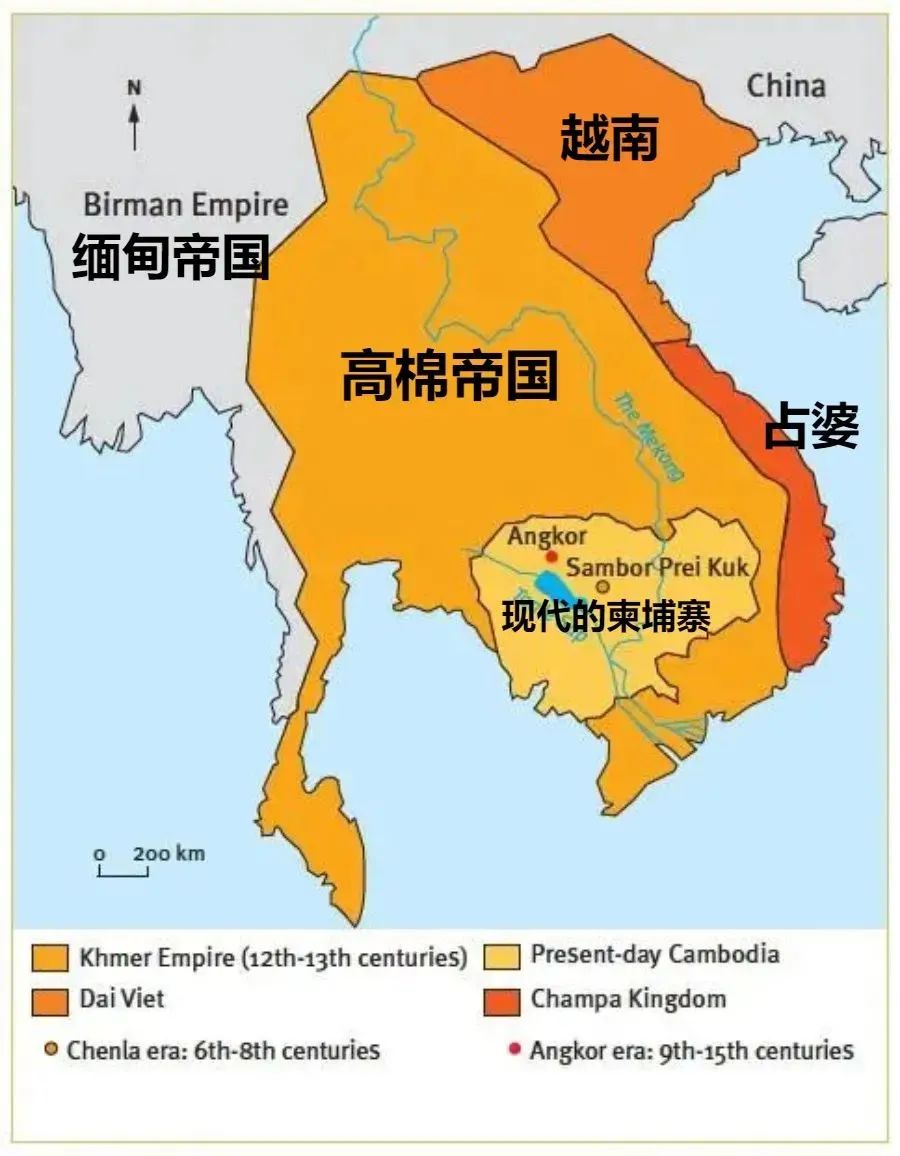
The picture shows the Khmer Angkor Dynasty map
In 1863, Cambodian King Norodom I signed a treaty with France, recognizing France's colonial rule, which lasted for 90 years. Unlike colonizing Vietnam, France has always treated Cambodia as a buffer zone with Thailand, so its economy and culture have not received enough attention. By 1953 when Prince Sihanouk declared Cambodia's independence, it was still a backward agricultural country. During the Cold War, relying on Sihanoukville's best efforts, Cambodia gradually got on track and began industrialization and modernization.
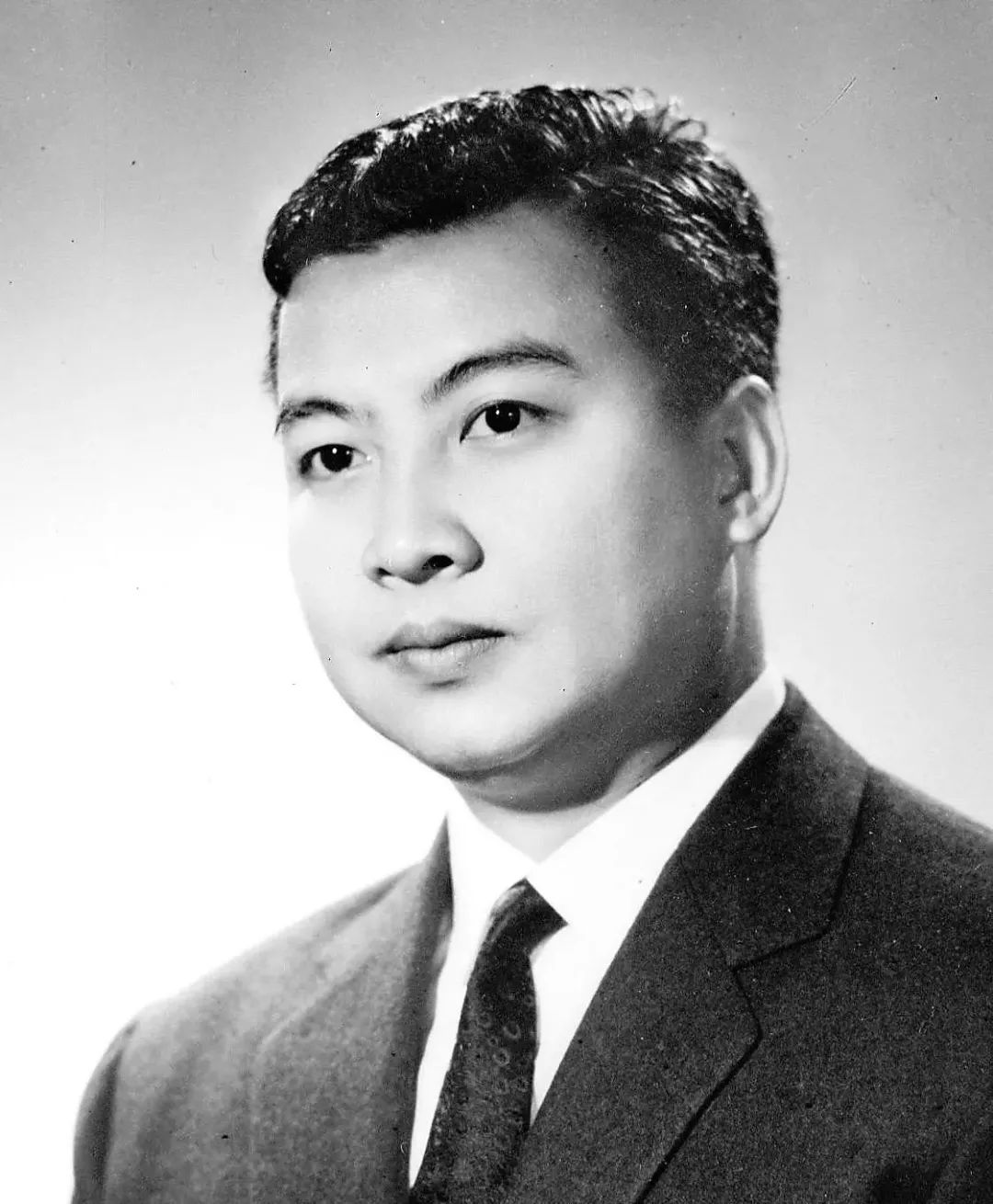
The picture shows a photo of Prince Sihanouk when he was young
But the good times did not last long, and the chaos in Cambodia began. The United States was extremely angry because Sihanouk acquiesced to transport supplies to the North Vietnamese army. In 1970, the United States instigated a coup in Cambodia's military, overthrew Sihanouk and established the pro-US Lonno regime, and Sihanouk was forced to go into exile overseas. A few years later, Pol Pot emerged. With the help of North Vietnam, the regime was seized in 1975 and the "Khmer Rouge" was established. Pol Pot pursues extreme social transformation policies, implements large-scale massacres and purges, and persecutes intellectuals, urban residents and ethnic minorities. The Khmer Rouge period was estimated to cause at least 2 million deaths, equivalent to one-quarter of Cambodia's population at that time, and was called the "Cambodia Massacre."
By 1979, Vietnam invaded Cambodia, overthrew the Khmer Rouge, and supported the pro-Vietnam Hun Sen regime. All forces are fighting for power and power, and Cambodia is trapped in a civil war. It was not until 1991 that all parties signed the Paris Agreement and Cambodia established a constitutional monarchy. In 1993, the United Nations provided $2 billion in aid to Cambodia, and has been led by Prime Minister Hun Sen since then. Although Hun Sen is a vocational regime, overall, it still brings peace and development to Cambodia. In 2023, Hun Sen handed over the supreme power to his eldest son, Hon Manai.
【Phone Edge】
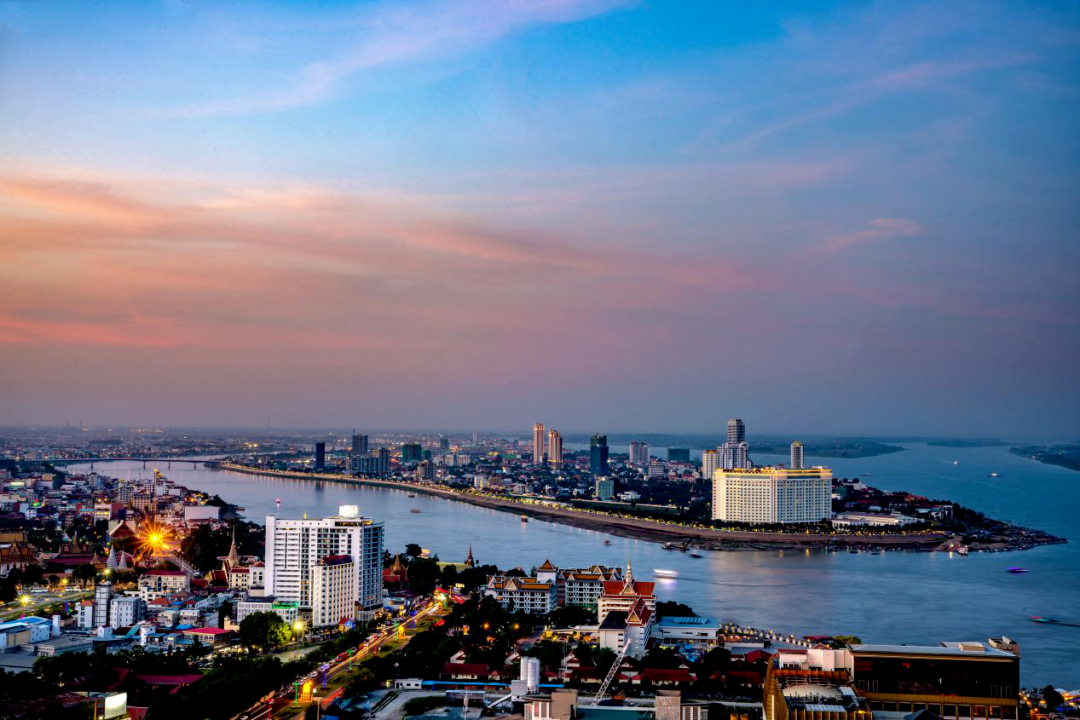
The picture shows a panoramic view of Phnom Penh, with the Tonlesa River on the left and the Mekong River on the right.
Phnom Penh is the capital of Cambodia and is located at the intersection of the Mekong River and the Tonle Sa River. The origin of the name "Pharmaceutical" is quite interesting. This city is called "Phnom Penh" in Khmer, which originates from a legend. One day 600 years ago, an aunt named Dunben found a tree trunk on the Mekong River, with Buddha statues hidden in it. Ben Laoma and the villagers built temples on a nearby hill to worship these Buddha statues. This temple is called "Wapunnongben (Benma Mountain Temple)" and the town at the foot of the mountain is called "Punnongben". Because there is a pagoda in the temple, Chinese and overseas Chinese like to call it "Golden Pagoda", called the mountain "Golden Pagoda Mountain", and the town at the foot of the mountain is "Town on the edge of Jinta Mountain". Over time, it evolved into "Golden Pagoda Mountain".
Tashan Temple
The "Ben Dama Mountain Temple" mentioned above is the current Tashan Temple. Tashan Temple is located on Tazai Mountain in the north of Phnom Penh. Tazai Mountain is 100 meters high and is the commanding height of Phnom Penh.
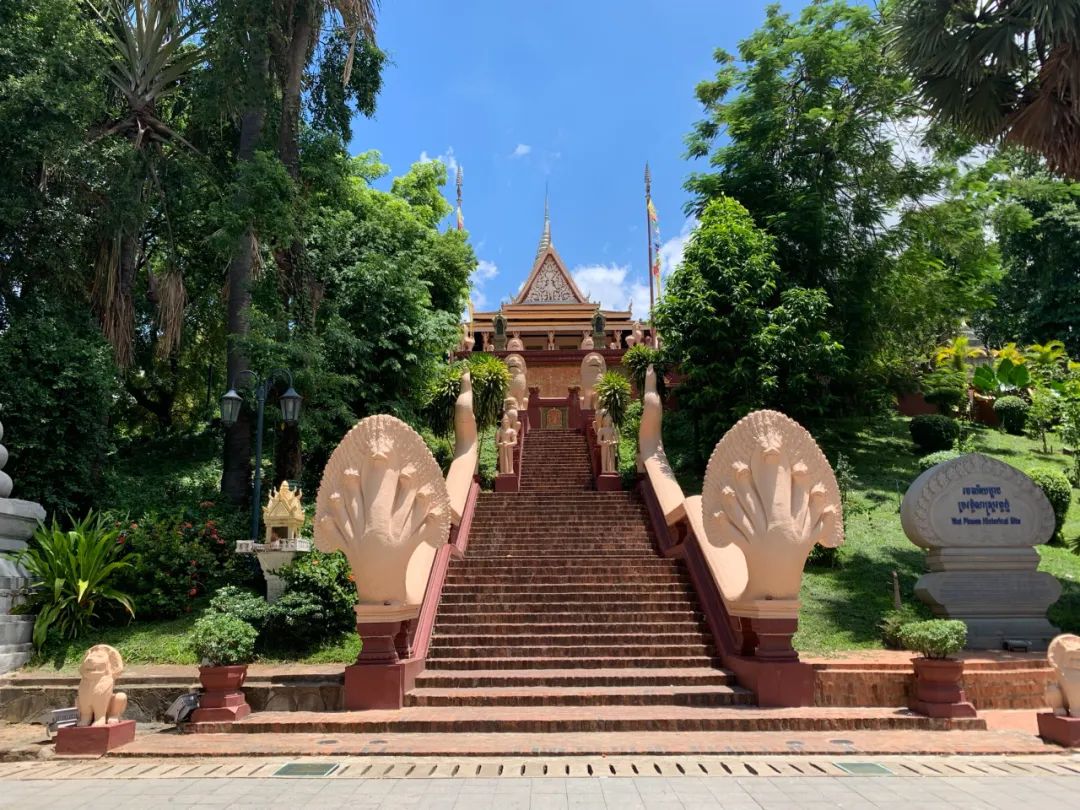
The picture shows two seven-headed Naga statues in front of the gate of Tashan Temple.
There is a statue of "Pen" enshrined in Tashan Temple, and a pagoda about 30 meters high. The tower overlooks the entire Phnom Penh, which is a landmark building in Phnom Penh. The temple is filled with Khmer-style relief sculptures, which are magnificent. It is worth mentioning that there are seven-headed Naga snake god statues on both sides of the temple gate. Naga is the snake god chosen by Brahman master Brahman, whose duty is to support and balance the earth, that is, the main god of the earth. In Cambodian mythology, Naga is considered to be the ancestor of Cambodians, and is also a symbol and patron saint of Cambodians. Naga statues are very common in Cambodia and determine different ranks and statuses according to the number of heads. For example, the seven-headed Naga is considered a guardian god, while the nine-headed Naga symbolizes the supreme imperial power.
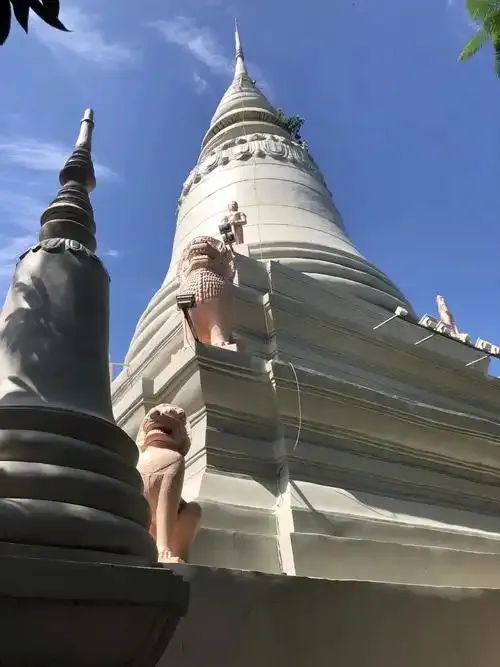
The picture shows the pagoda behind Tashan Temple
Tuk tuk
Leaving Tashan Temple, take the tuk-tuk, a very distinctive means of transportation in Cambodia. Tuk-Tuk is very common in Cambodia cities. "Tuk-Tuk" describes the sound of the engine when driving, which is divided into big tuk-tuk and small tuk-tuk. The small tuk tuk is a semi-closed motor tricycle that can ride two to three people; while the big tuk tuk is a trailer, the motorcycle in front drags the rear carriage and can ride four to six people. Compared with taxis, tuk tuks are more economical and have gradually become one of the business cards of Cambodian cities.

The picture shows a small tuk tuk
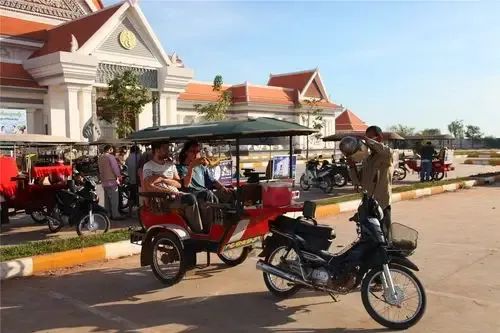
The picture shows a big tuk tuk
Yuna Ryuji Temple
About 1 kilometer south of Tashan Temple, there is an ancient temple "Wunalong Temple". The temple was built in 1441 and the pagodas in the temple can be traced back to the Angkor era. "Wunarong" means "Holy Eyebrow". Legend has it that the temple contains the eyebrows of an unknown saint. In 1890, the temple presided over the temple welcomed the Buddha's relics from Sri Lanka and worshipped them in the pagoda. Since then, Unalong Temple has become the Buddhist center of Cambodia.
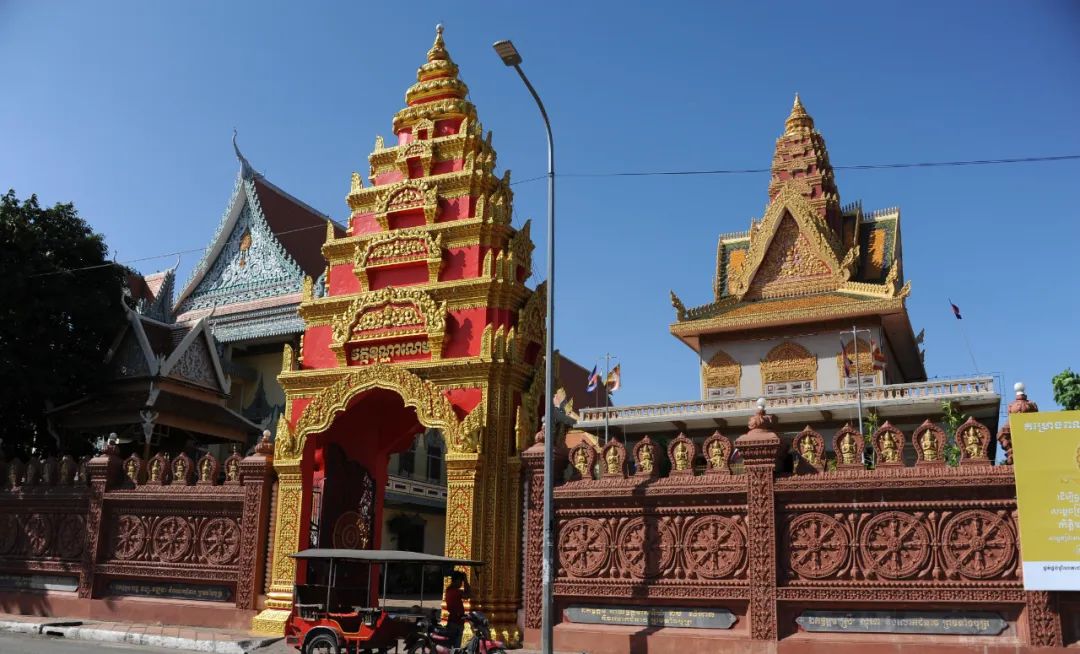
The picture shows the main entrance of Wunalong Temple
Buddhism is the state religion of Cambodia, and nearly 97% of Cambodians believe in Buddhism. Buddhism is a global religion with a huge branch system. Simply put, since Sakyamuni Nirvana, two major sects have gradually formed, The Theravada and the Mass. The Theravada is relatively conservative and strictly abides by the rules and precepts set by the elders; while the Massachusetts, in contrast, believe that the precepts need to keep pace with the times and some inappropriate precepts need to be abolished. After that, the influence of Buddhism continued to expand and gradually spread to areas outside India. According to geographical communication, it can be divided into "Southern Transmission", "Northern Transmission" and "Tibetan Transmission". The Southern Transcendence mainly spreads to Sri Lanka and Southeast Asia, basically The Theravada; while the Northern Transcendence and Tibetan Transcendence, the former was introduced to China through Afghanistan, and the latter passed through the Himalayas to Tibet. Both are branches of the Popular Division. According to Buddhahood, the Northern and Tibetan Buddhism gradually evolved into "Mahayana Buddhism", emphasizing the universal salvation of sentient beings; while the Southern Buddhism evolved into "Haisatis Buddhism", emphasizing personal liberation. "Haikata" was initially derogatory, and "Haikata" means carrying and practicing. Because Mahayana has the world in mind, it looks down on Hinayana and focuses on oneself, so it gives this name to belittle Hinayana's narrow-mindedness. The introduction is really simple, don't scold me.
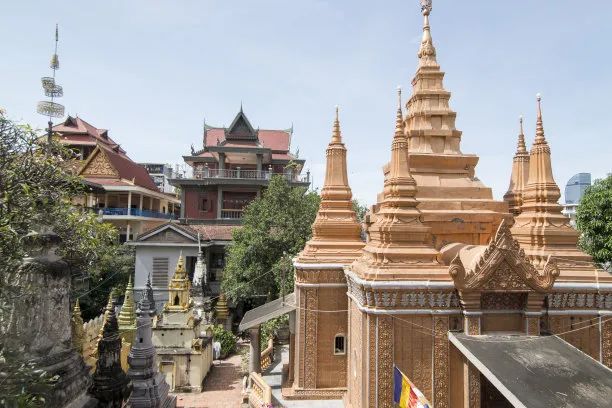
The picture shows the pagoda of Wunalong Temple
Therefore, Buddhism in Cambodia belongs to Theravada Buddhism and Hinayana Buddhism. In Cambodia, Buddhism can be divided into two sects, the Bodhidharma school and the Mahaniga school. The former was founded and introduced by the Thai kings, and it was mainly spread among the royal family and aristocrats. The latter is a Khmer native sect, which is mainly spread among the people. 90% of Buddhists are this sect, which absorbs a lot of modern ideas and is relatively relaxed in keeping precepts. The latter's sectarian center is officially Unalong Temple. Finally got around haha.
Four-arm Bay
After leaving Unalong Temple, walk 500 meters south to reach the Phnom Penh Royal Palace. Outside the gate of the Phnom Penh Palace is a green space, with pigeons growing freely on the green space. Passing through this green space is the river bank. This is the confluence of four major rivers, namely the Mekong River, the Tonlesa River, the Basha River and the Qianjiang River, with a wide surface. If you look down from the air, it is like holding four arms together, so the gold edge is also called the "Four-Armed Bay" and the palace is also called the "Four-Armed Bay Palace".
Cambodia has a very important traditional festival, "Water Delivery Festival", which usually lasts for three days in mid-November. The festival marks the end of the rainy season and the beginning of the fishing season, and is also a gratitude for nature and harvest. During the festival, Cambodians will race dragon boats on the Tonlissa River in front of the palace, enjoy the lantern boats, worship the moon, etc., which is a very grand and lively festival.
The Palace of the Phnom Penh
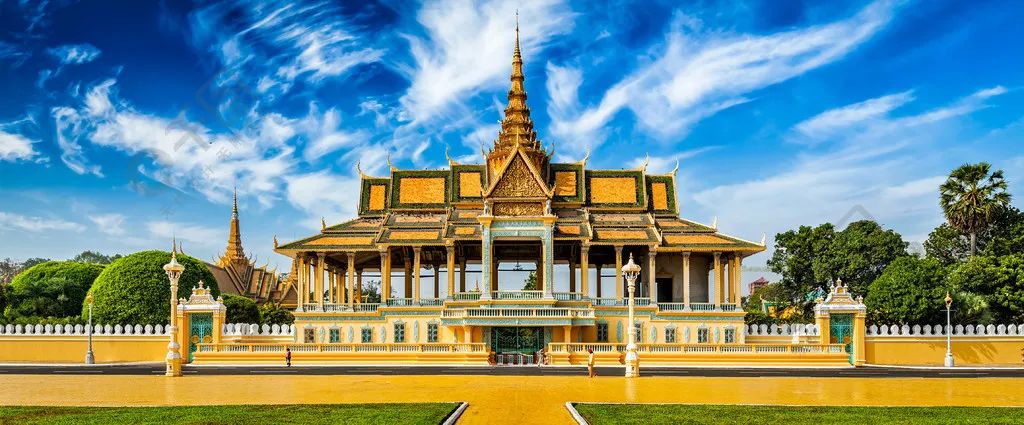
The picture shows the main entrance of the Phnom Penh Palace
Turn your head and enter the Phnom Penh Palace. The palace is a small rectangle, 435 meters long and 403 meters wide, with more than 20 large and large palaces inside. Half of them are the bedroom area of the Cambodian king, and only a small part is open to tourists. All buildings are yellow and white Khmer-style buildings, yellow represents Buddhism and white represents Brahmanism. In Cambodia, looking at architectural styles remember this node in the 13th century AD. Before this, the dynasties believed in Brahmanism, and the architecture had Brahman elements, such as Angkor Wat; in the dynasties after this, because the Angkor King converted to Buddhism, the architecture had many Buddhist elements, and it has been this day.
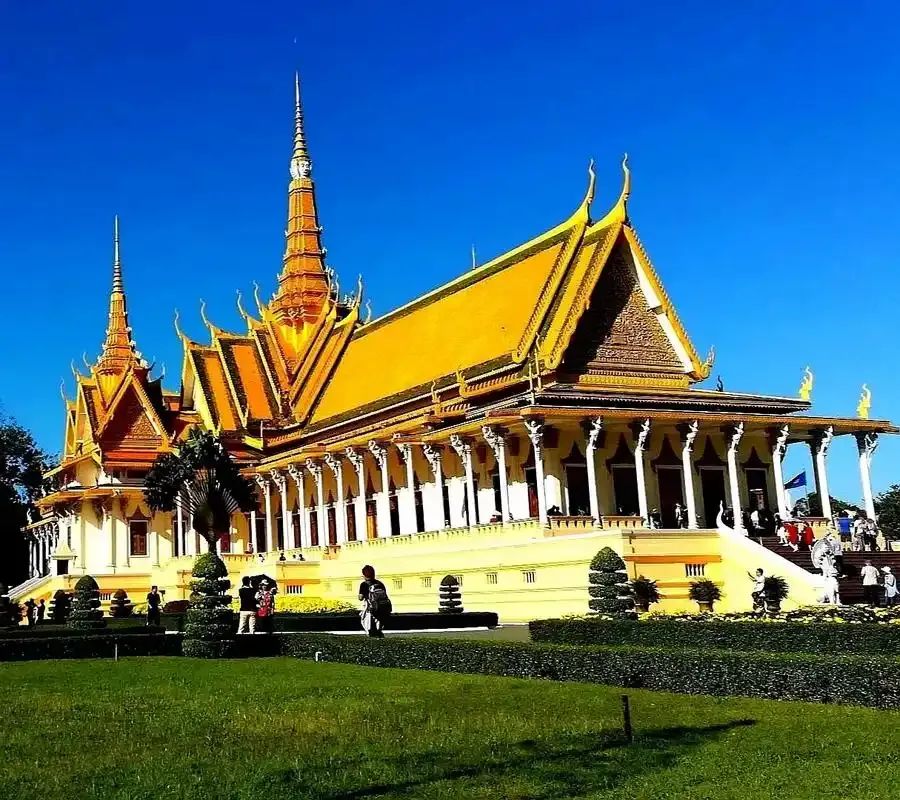
The picture shows the Silver Palace of the Phnom Penh Palace
What is worth mentioning in the Phnom Penh Palace is the "Silver Hall", which is the royal family temple. There are towering spires on the Silver Hall, engraved with complex patterns. The golden roof is stacked down, and the end of the ridge is raised high, which is very beautiful. Below is a corridor surrounded by white stone pillars, decorated with exquisite relief murals. The interior of the palace is even more gorgeous. The floor is paved with more than 5,000 pieces of carved silver bricks, each piece of silver brick is about 0.2 meters square and weighs 1.1 kilograms. There is also a 60-centimeter jade Buddha enshrined in the palace. It is carved from a whole piece of jade, crystal clear and is a national treasure of Cambodia.
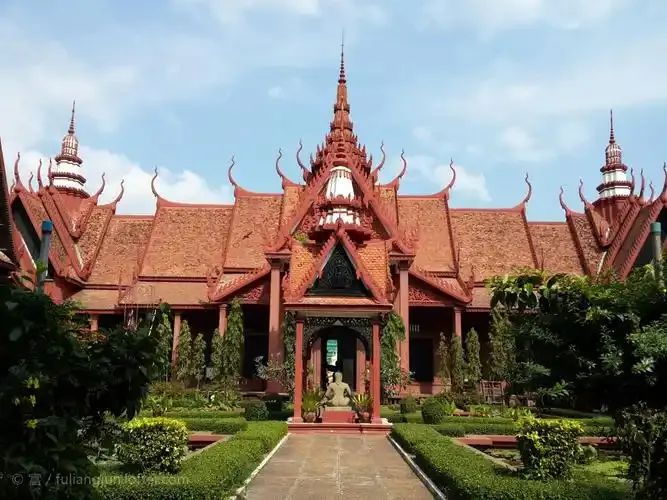
The picture shows the main entrance of the National Museum of Cambodia
To the north of the palace is the National Museum of Cambodia, which displays many cultural relics from the Angkor Dynasty, and the exterior buildings are also relatively Khmer-style. To the south of the royal palace is Bodong Temple, which is across from Unalong Temple. It is the Buddhist center of another major Buddhist sect in Cambodia, "Dharma School". And further south, there is a wide road that runs across the east and west, which is Sihanouk Avenue.
Sihanoukville Avenue
Sihanoukville Avenue is very wide, with a green isolation belt in the middle, which is about 3 kilometers long. Its name is to commemorate Prince Sihanouk, one of Cambodia's greatest kings. He has a lofty position in the hearts of the Cambodian people and is known as the "father of independence".
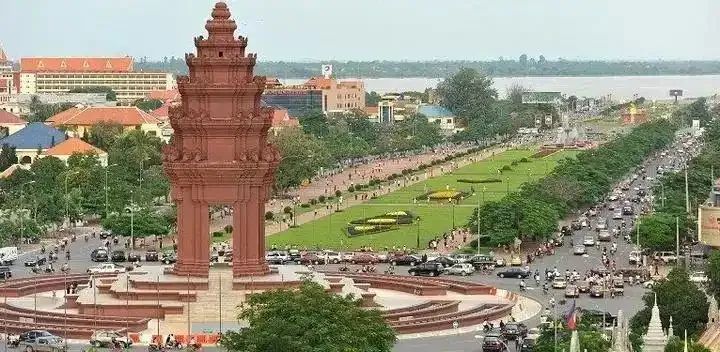
The picture shows a panoramic view of Sihanoukville Avenue
In 1941, Sihanouk inherited the throne and became the king of Cambodia. On November 9, 1953, France withdrew its troops and Sihanoukville declared Cambodia's official independence and implemented a constitutional monarchy. In order to better lead the country, Sihanouk abdicated in 1955 and became Prime Minister. From 1953 to 1970, Cambodia's economy, politics and culture developed rapidly under the leadership of Sihanoukville, and was called the "Golden Age".
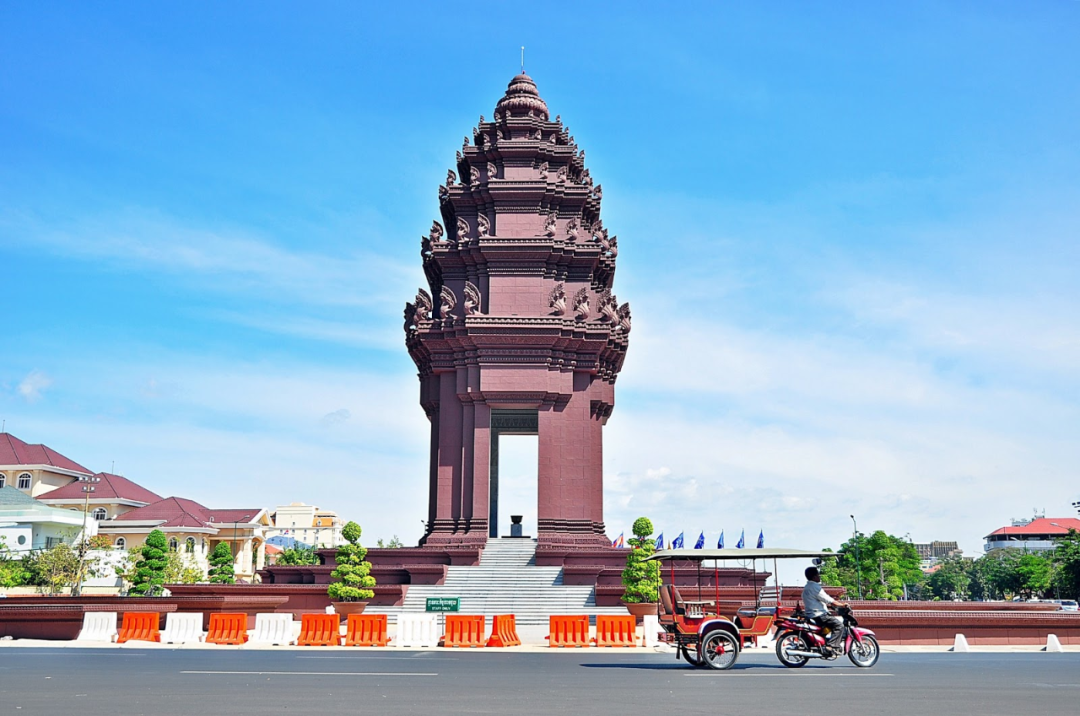
The picture shows the Cambodian Independence Monument, with 100 Naga Snake God engraved on it.
Sihanouk pursues a neutral policy of non-alignment, and it has to be said that this has very clever political wisdom. At that time, it was under the background of the Cold War, Thailand on the left, Vietnam on the right, China on the north, and the United States on the south, Cambodia was at the intersection of the Southeast Peninsula. In addition, Vietnam and Laos were still fighting civil wars, surviving in the cracks, winning a short-term peace, and creating a distinctive "Buddhist socialism." This is different from the socialism proposed by Marx. Buddhist socialism still retains the monarchy, combines the state, Buddhism and the king, mainly formulates policies based on Buddhist doctrines, and then absorbs the public-owned economic system and integrates it.
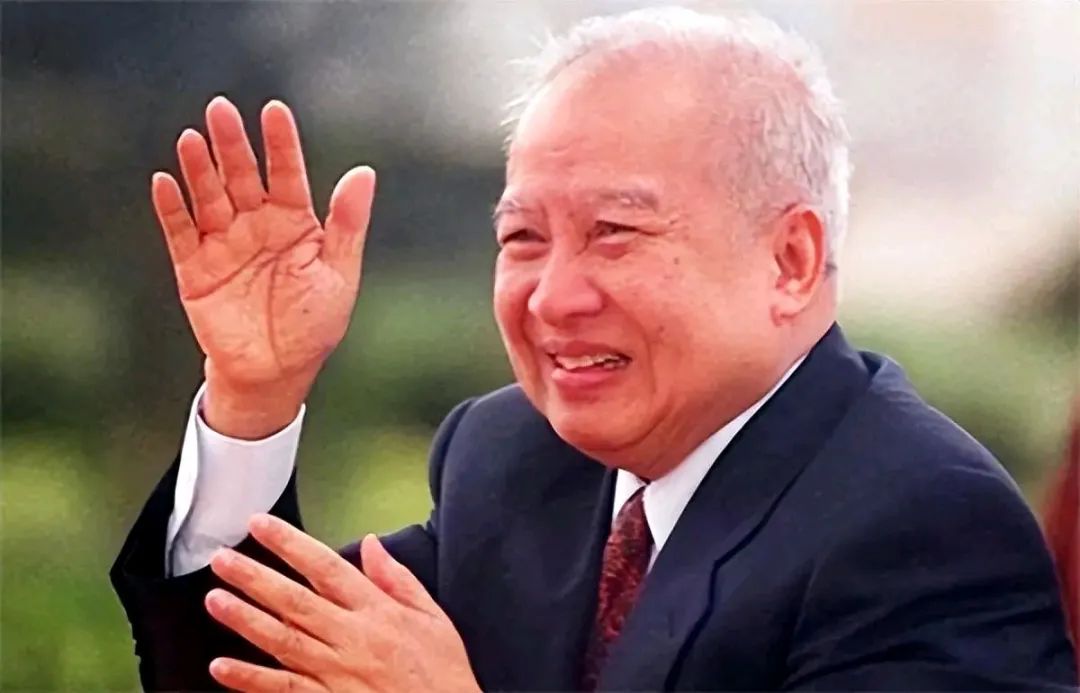
The picture shows a photo of Prince Sihanouk in his later years
But the good times did not last long. The warring United States was dissatisfied with Cambodia's neutral policy and believed that Sihanouk established diplomatic relations with China and supported North Vietnam in secret, which was a sentence for the United States. In 1970, with the planning and assistance of the United States, Ronno launched a coup, abolishing Sihanouk's position as prime minister, and Sihanouk was forced to go into exile overseas. After 23 years of turbulence, it was not until 1993 that Cambodia re-election that Sihanouk inherited the throne again. In 2004, Sihanouk announced his abdication and died in Beijing in 2012 at the age of 90.
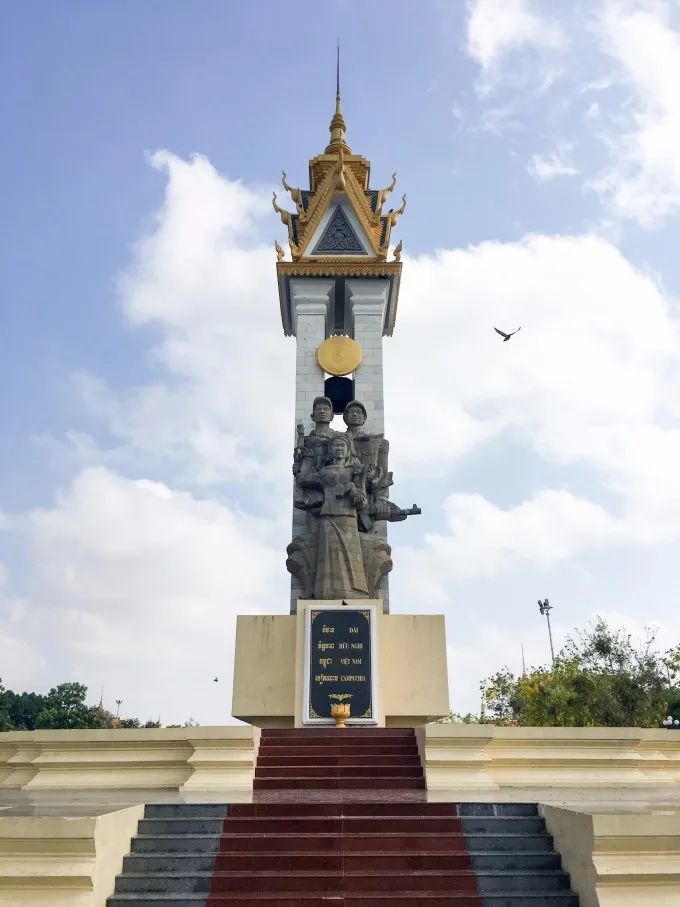
The picture shows the Cambodia-Vietnam Friendship Tower
It is worth mentioning that not far from Sihanoukville Avenue, the Cambodia-Vietnam Friendship Tower is also erected, which was built to commemorate Vietnam's dispatch of troops to overthrow the Khmer Rouge in 1979. As we all know, Cambodians and Vietnamese are not in the way of dealing with them. Before French colonization, Vietnam occupied Cambodia's land. During the French colonial period, many Vietnamese were sent to Cambodia to suppress and exploit locals. If you want the Cambodians to thank the Vietnamese for sending troops, you can imagine how guilty the Khmer Rouge would be. This is exactly what we want to find out when we are next stop.
Tusling Massacre Museum
The Toast Range Massacre Museum is 2 kilometers southwest of the Independence Monument, also known as the "S-21 Concentration Camp", which is one of the witnesses of this history.
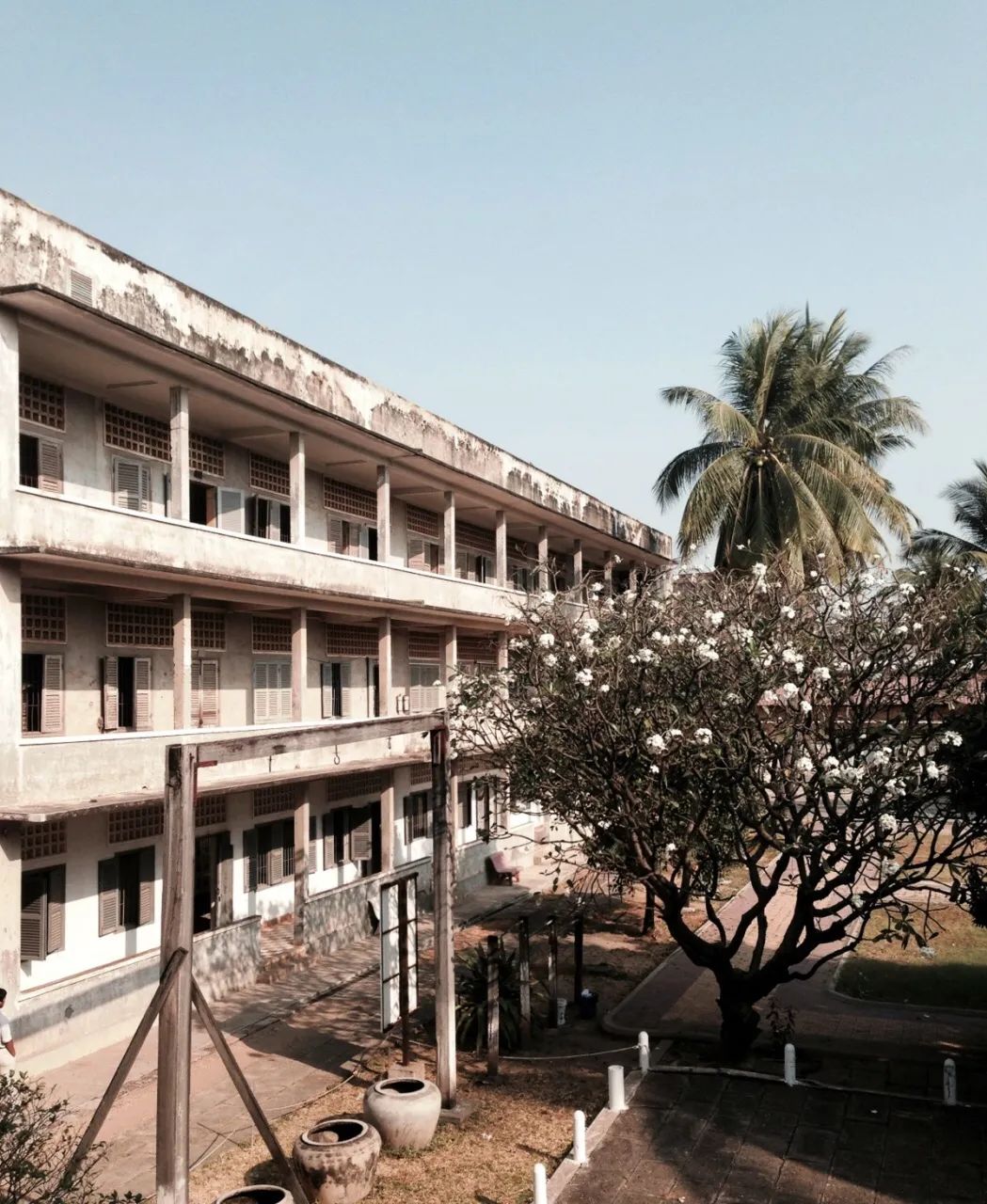
The picture shows the Tusling Massacre Museum, with a boom for torture in front and a prison where prisoners are held behind.
"Tu Silian" means "toxic highland". Its predecessor was a three-story school, which was later changed to a concentration camp. In the four years from 1975 to 1979, about 20,000 people were detained here, suffering from various tortures and tortures. Those who were lucky enough to have not been tortured to death will be sent to the "Clock House Murder Field" 8 kilometers away for a unified execution. That was another more suffocating killing field. If Tuslin was still responsible for interrogation and execution, then Zhongwu would have only one purpose, massacre. At least hundreds of people were massacred there every day. In order to eliminate future troubles, even their families would be executed. The baby of a few years was directly thrown to death on the trunk. In the end, only 12 people walked out of the concentration camp alive. There are about 300 concentration camps like this in Cambodia, causing more than 2 million abnormal deaths, equivalent to one-quarter of Cambodia's population.
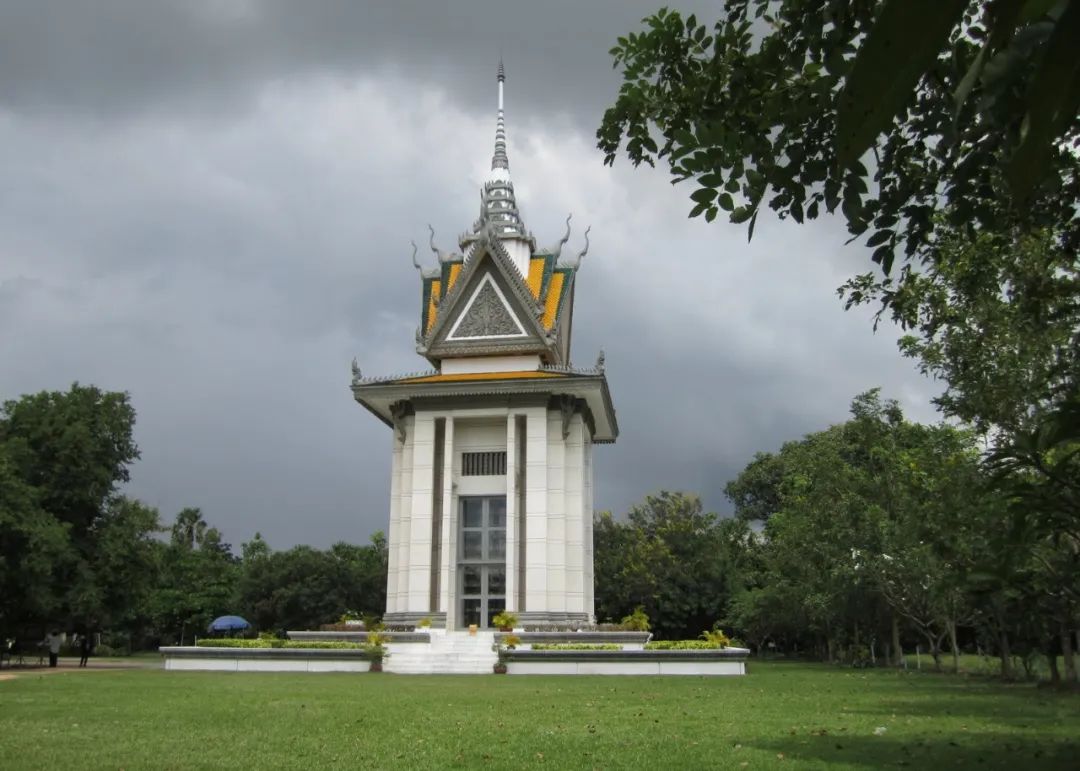
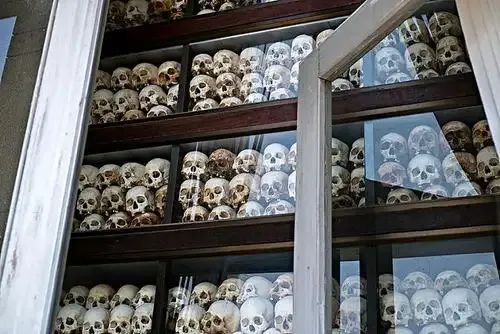
The picture shows the pagoda and interior of the Zhongwu murder field
Alas, let's open the most sad page of history in Cambodia and take a look at Pol Pot and his Khmer Rouge.
Pol Pot is not his real name, it means "Teacher Bute" in Khmer. His real name is Shalo Tesau, and he was born in a wealthy peasant family. When he was young, he went to France to study and came into contact with Marxism-Leninism and especially admired Stalin. In 1953, when Cambodia was in independence, Pol Pot returned to China and actively participated in political activities. In 1960, he established the Cambodian Communist Party, which was later renamed "Khmer Rouge". During this period, Pol Pot continued to accumulate strength and wait for an opportunity to move. In 1975, the pro-US Longno regime became increasingly unpopular and lost American aid. Pol Pot took this opportunity to quickly attack Phnom Penh and captured other areas of Cambodia in the next two days. The Longno regime completely collapsed and fled to the United States. The Khmer Rouge officially took power and changed the country's name to "Democratic Cambodia".
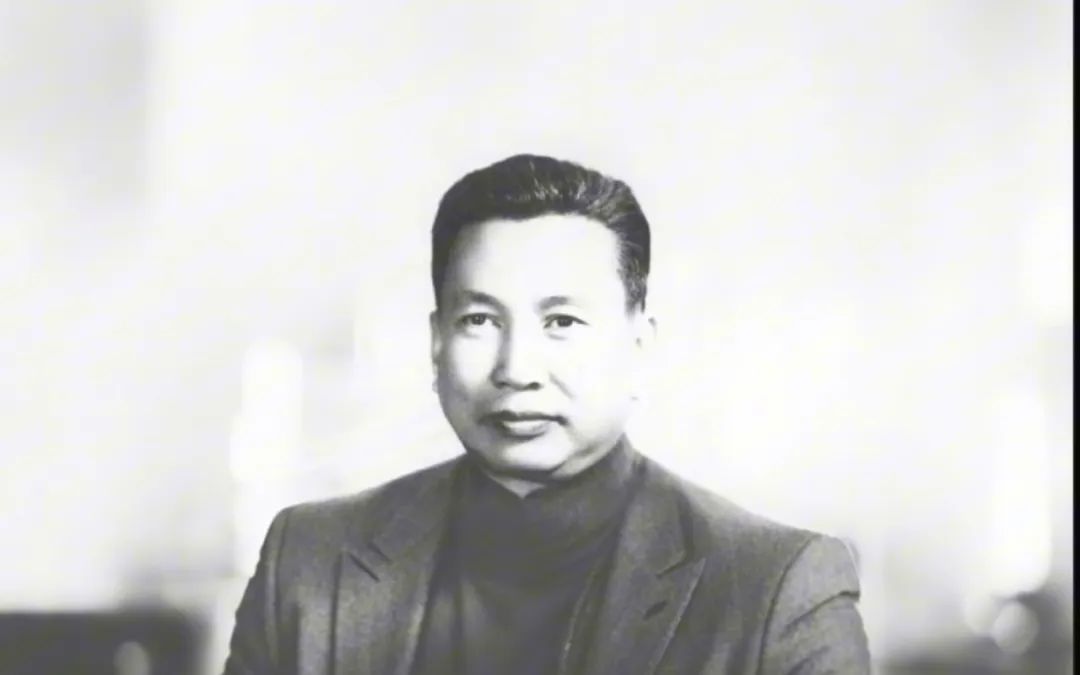
The picture shows a photo of Pol Pot
Pol Pot implemented radical social reforms to eliminate the bourgeoisie's forced evacuation of urban residents, deprive private property, and suppress dissidents and intellectuals, especially Chinese. At that time, most Chinese were wealthy businessmen and intellectuals, and they were the target of the Khmer Rouge's key crackdown. The political meme, "I also wear glasses" comes from here. At that time, there were a total of 420,000 Chinese in Cambodia, and in the end there were only more than 200,000, and nearly half of them were killed. Not only that, Pol Pot also abolished currency and commodity exchanges, closed schools and hospitals, and implemented on-demand distribution and extreme egalitarianism. A series of radical policies have led to the collapse of social order and the sharp decline in agricultural productivity, resulting in large-scale famine, disease and human rights disasters.
By 1979, Cambodian people were living in poverty. As Vietnam had just won the Vietnam War and its ambitions were expanding, it sent troops to invade Cambodia and overthrow the Khmer Rouge, which became a good thing that was wrong. After Pol Pot defeated, he led his army to hide in the mountains and forests and continued to resist until he was captured by insiders in 1997 and died the following year, ending his sinful life.
Alas, it's too heavy, this article ends here, and some more Phnom Penh will be put into the next article. Here is the circuit diagram of this article.
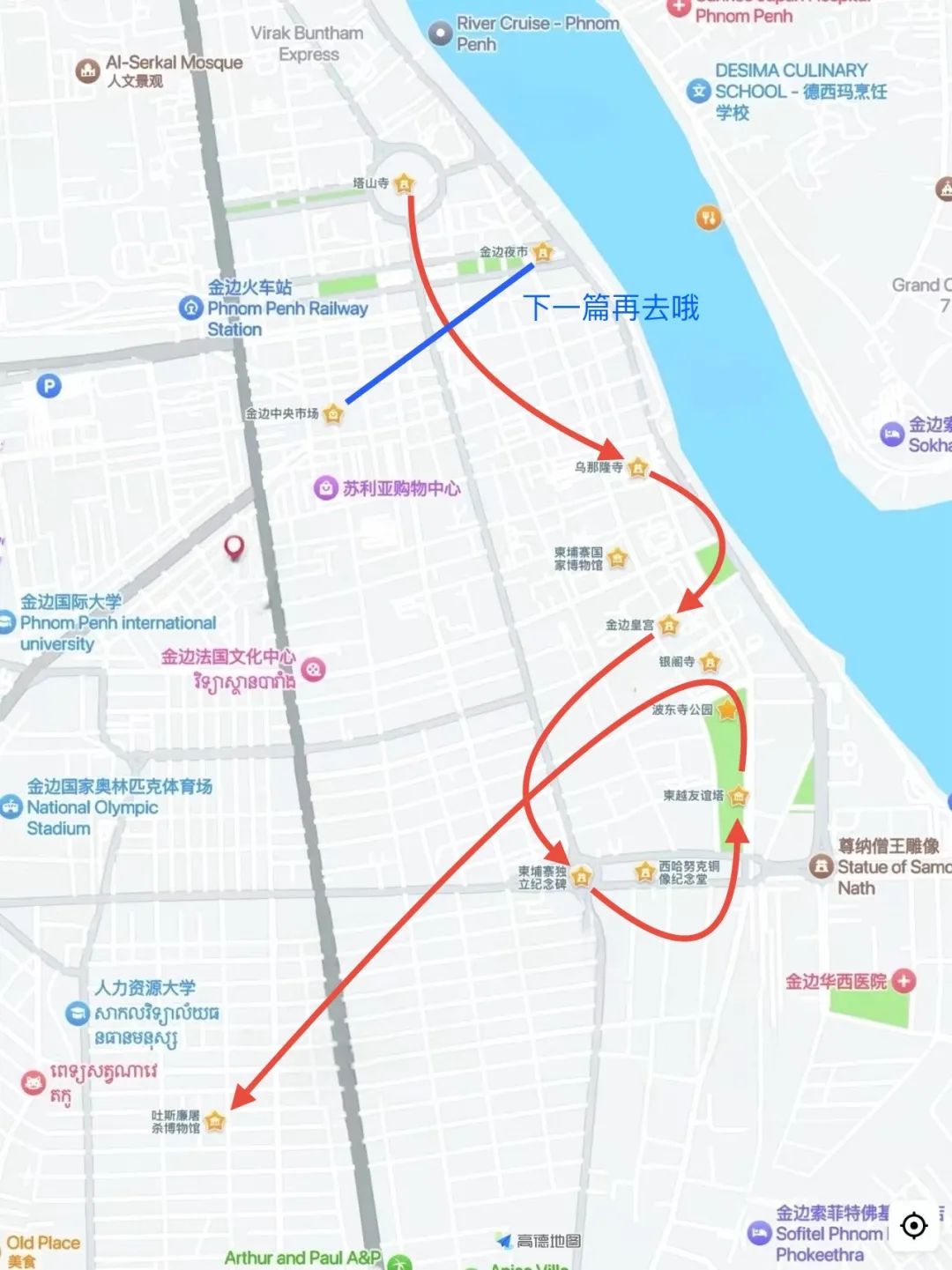
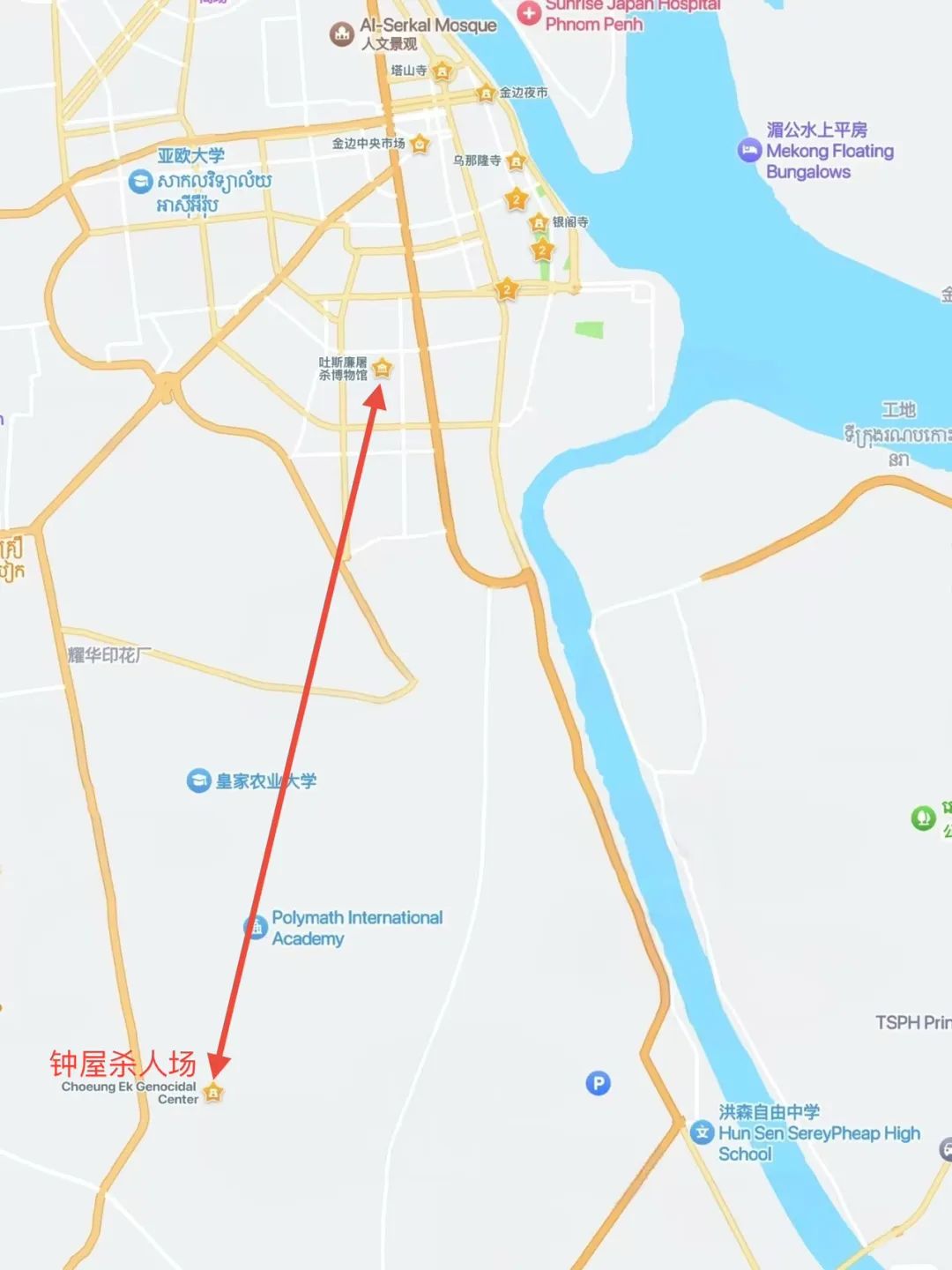
The picture shows the roadmap of this article
【Tail】
This article talks about the Khmer Rouge, so let’s recommend some related books and movies. I can’t be the only one who suffers.
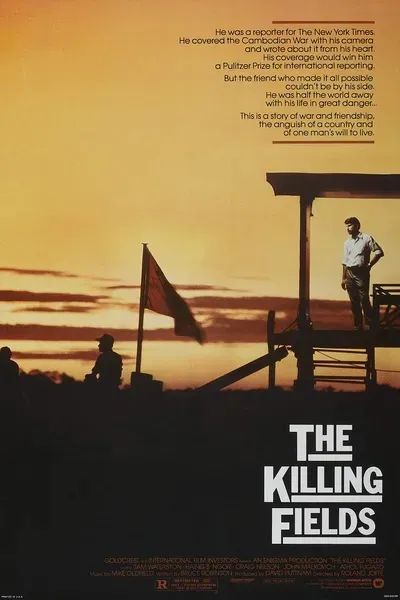
The picture shows the poster of "Killing Battlefield"
The movie "The Battlefield of Killing" is directed by American director Roland Yoffi. The film is based on real events and tells the story of an American journalist and a local Cambodian translator under the Khmer Rouge rule. The reporter and the translator were supposed to record the US bombing of Cambodia, but unexpectedly, the Khmer Rouge army invaded Phnom Penh, so the two had to hide in the French Embassy. But because the translator was Cambodian, the embassy had to hand him over to the Khmer Rouge, and the reporter successfully returned to the United States. With his outstanding reports, the reporter won the News Award, but the translator was still obsessed with. The translation was captured by the Khmer Rouge for forced labor and suffered a lot. After several deaths, I finally escaped to Thailand and hugged the reporter waiting there.
The film was released in 1984, and the translator Wu Hanrun won the 57th Academy Award for Best Supporting Actor.





